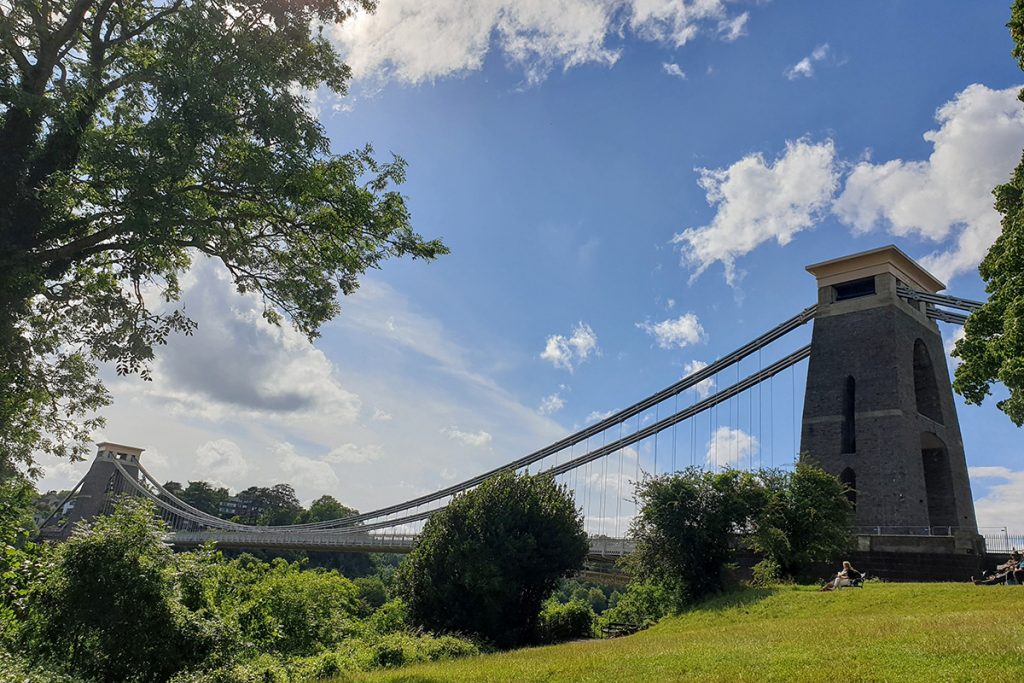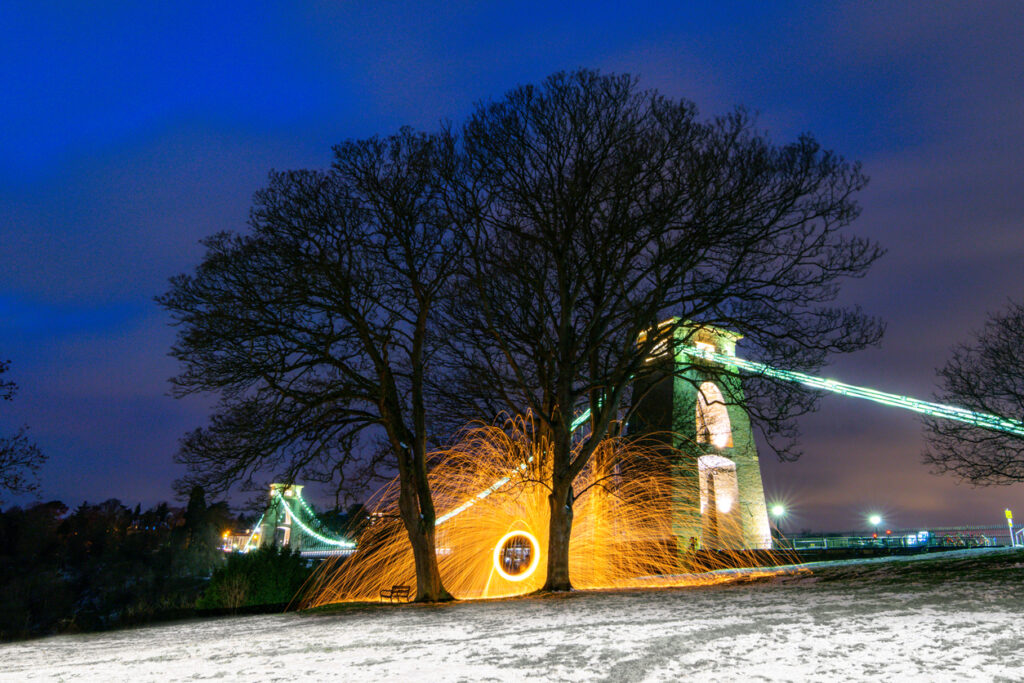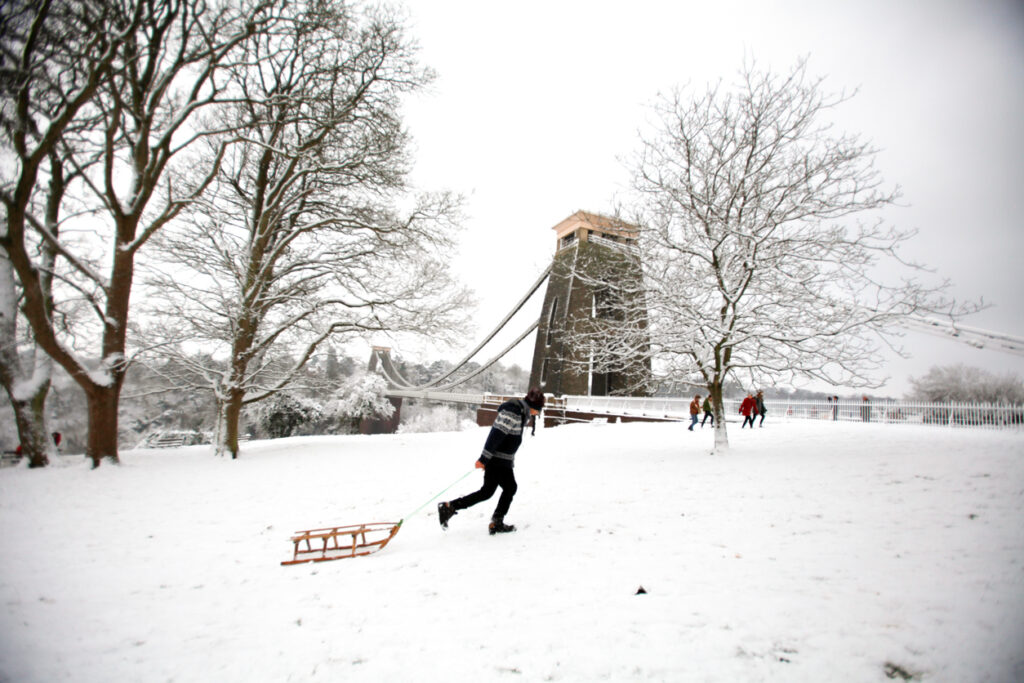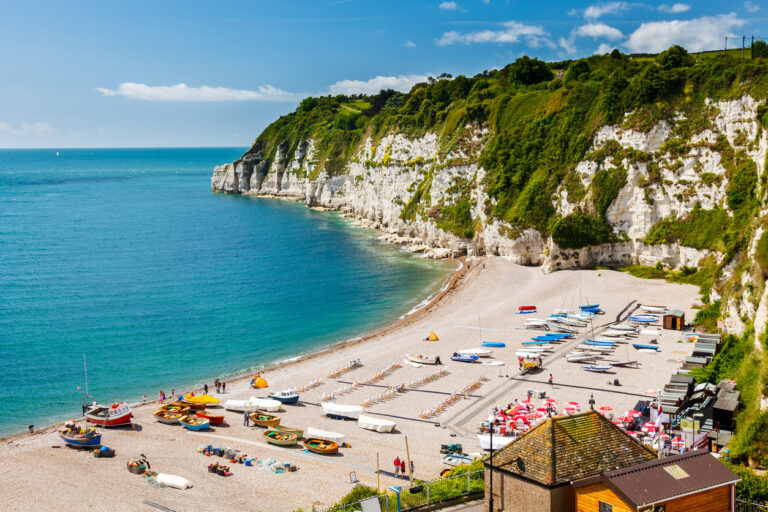These Clifton Suspension Bridge facts will fascinate you!
The Clifton Suspension Bridge is one of the West Country’s most iconic structures.
Tracing its origins back to the early 19th century, this engineering masterpiece has been the backdrop to countless stories, both grand and personal, over the decades!
Here are some of my favourite facts about the Clifton Suspension Bridge.
It all started with a competition

The Clifton Suspension Bridge’s origin story starts with a competition in 1829 that drew attention nationwide; it asked for a design to span the Avon Gorge.
The winter would win 100 guineas.
Among the competitors was Isambard Kingdom Brunel, then only 24 years old, who submitted four designs – 22 designs in total were proposed.
Interestingly, none of them won the competition – Thomas Telford who was the competition judge rejected them all and decided to design his own bridge!
The competition actually closed and then re-opened
Telford’s bridge would take £52,000 to build, and they failed to raise the capital to do so.
This led to Brunel submitting another design that cost £10,000 less to build – and this was the eventual winner!
Four million cars cross the bridge every year
As it’s one of the main thoroughfares connecting Bristol with North Somerset, it’s no surprise that the bridge is busy – but, of course, when it was built the designers had horse-drawn carriages in mind!
But today, it facilitates the crossing of over four million vehicles annually.
The structure is complex to say the least!

The Clifton Suspension Bridge’s remarkable structure is anchored by 3,500 load-bearing bolts and extensive chains that delve a whopping 20 miles underground.
Its wrought iron chains have a historical significance of their own – they were repurposed from the Hungerford Chain Suspension Bridge, which was demolished in 1860.
The bridge was the site of the first modern bungee jump
In 1979, the Clifton Suspension Bridge hosted the world’s first organized modern bungee jump, executed by members of the Oxford University Dangerous Sports Club.
David Kirke, dressed in a top hat and holding a champagne bottle, was the first to leap, followed by Simon Keeling.
This event is recognized as the birth of modern bungee jumping, distinguishing it from earlier, less formal leaps by incorporating safety measures and calculated risk.
Since then, the bridge’s role in bungee jumping history has remained iconic, though it hasn’t regularly hosted similar events, largely due to safety and preservation concerns.
It was the site of the miraculous Sarah Ann Henley jump
In 1885, Sarah Ann Henley jumped from the Clifton Suspension Bridge but survived – her fall allegedly cushioned by her billowing skirts which acted like a parachute.
This remarkable incident has been scrutinized over the years, with some questioning the plausibility of her skirts enabling such a miraculous landing!
Apparently, she was conscious and able to speak when she landed, and was discovered by Detective Robertson who tried to get her to medical help as soon as possible. He asked a taxi driver to take her to the hospital – who refused because he didn’t want to make the taxi dirty!
Sarah ended up marrying and living to the age of 85, until 1948.
The original plans for the bridge included Egyptian-style towers

The original plans for the Clifton Suspension Bridge included towers designed in an Egyptian style – this was the 19th-century, when there was a fascination with Egyptology and the allure of ancient civilizations!
However, due to financial constraints and practical considerations, this ambitious plan was ultimately simplified.
Instead, the final design focused on the structural integrity and functionality needed to span the Avon Gorge; which may well be why it’s still standing today!
And there are 12 vaults underneath that were only discovered 20 years ago
Underneath the bridge, you’ll find 12 huge vaults! You can do a vault tour to see these and the inside of the bridge.
The vaults include stalactites and are an alternative way to see the bridge!
Click here to read more about these guided vaults tours.

Did you know these Clifton Suspension Bridge facts?
Fascinating, right? Arm yourself with these Clifton Suspension Bridge facts before your next trip!
And don’t forget to check out these posts:






